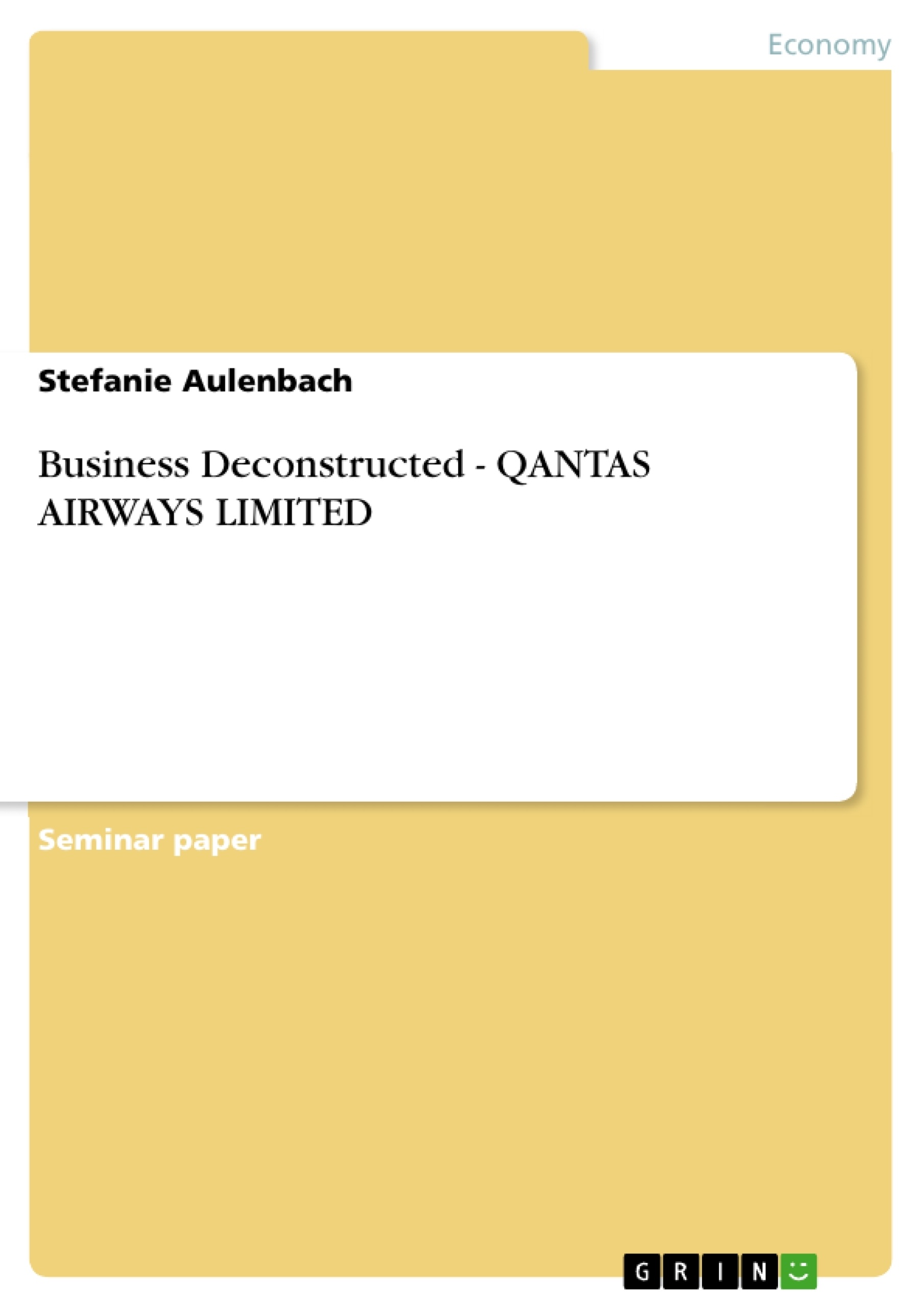The Group's principal activities are operating international and domestic air transportation services, providing freight services, selling international and domestic holiday tours and associated support activities including information technology, catering, ground handling and engineering and maintenance. (http://www.qantas.com.au)
Qantas flies to more than 142 destinations in about 40 countries. Besides Qantas the company's operations include an Australian regional carrier, QantasLink, and a low-fare carrier, Jetstar. Overall, the company's fleet includes about 219 aircraft. Qantas is part of the Oneworld global marketing and code-sharing alliance, which is led by British Airways and American Airlines. A proposed purchase of Qantas by an investment group led by Macquarie Bank and TPG failed to win shareholder approval in 2007. (http://www.qantas.com.au)
Stakeholders are all groups and individuals who have an interest in the company being analysed. In order to focus on these groups which have the power to influence, corporate level activities have to be identified first. This can include large shareholders, governments and trade unions. The power and interest of those stakeholder groups have an impact on the process by which strategy develops at the corporate level and in each individual business.(Williamson et al, 2004, pg. 9)
Qantas’ stakeholders are its shareholders, employees, customers, business partners and the community, indirect stakeholders include academics, the media, governments and non- governmental organisations. They all have a major influence on the business, its strategy and therefore its performance.
According to the Institute of Chartered Accountants in England and Wales “the objective of financial statements is to provide information about the reporting entity’s financial performance and financial position that is useful to a wide range of users for assessing the stewardship of the entity’s management and for making economic decisions”.(Institute of Chartered Accountants in England and Wales, 2002/2003, pg. 22) Furthermore, it says that this objective can usually be met by concentrating only on the information needs of present and potential investors which are the defining class of user. That is the reason why I will focus on present and potential stakeholders in the main part of this assignment.
Table of Contents
- Introduction
- Company profile Qantas Airways Limited
- Qantas’ stakeholders
- Legal form
- Limited Liability
- Corporate Personality
- Lifting the Corporate Veil
- Corporate Governance
- Financial analysis and proposing strategy
- Financial analysis
- Fig.1: Financial analysis information
- SWOT- Analysis
- Strategy Development
- Implementation of Strategy
- Budgeting
- Balanced Scorecard
- The learning and Growth Perspective
- The Business Process Perspective
- The Customer Perspective
- The Financial Perspective
Objectives and Key Themes
This assignment analyses Qantas Airways Limited, a major Australian airline, with a focus on its financial performance, strategic planning, and implementation. The analysis aims to provide a comprehensive understanding of the company's strengths, weaknesses, opportunities, and threats, and to propose strategies for future growth and success.
- Financial Performance Analysis: This includes an evaluation of Qantas's financial performance, exploring key financial ratios and trends, and identifying factors contributing to its profitability.
- Strategic Analysis: The assignment explores the development and implementation of Qantas's business strategy, including its SWOT analysis, market positioning, and competitive advantage.
- Stakeholder Management: The analysis considers the various stakeholders of Qantas, their interests, and how the company manages their expectations.
- Corporate Governance: The assignment examines Qantas's corporate governance framework, including its board structure, compliance practices, and ethical considerations.
- Balanced Scorecard: The assignment discusses the application of the Balanced Scorecard framework to measure and manage Qantas's performance across various perspectives, such as financial, customer, internal processes, and learning & growth.
Chapter Summaries
- Introduction: This chapter provides a brief overview of Qantas Airways Limited, including its company profile, key stakeholders, legal form, and corporate governance structure.
- Financial analysis and proposing strategy: This chapter delves into the financial analysis of Qantas, examining key financial ratios and trends. It explores the strengths and weaknesses of the company, analyzes its competitive position, and identifies potential strategic opportunities and threats. The chapter also proposes a strategic framework for the company's future growth.
- Implementation of Strategy: This chapter explores the implementation of Qantas's proposed strategy, focusing on budgeting and the Balanced Scorecard framework. The Balanced Scorecard approach is examined in detail, including its four perspectives: learning and growth, business processes, customers, and financial performance.
Keywords
The key focus areas of this assignment are financial performance, strategic management, stakeholder engagement, corporate governance, and the implementation of the Balanced Scorecard framework. Specific themes include financial ratios, SWOT analysis, competitive advantage, budgeting, customer satisfaction, and employee development.
- Quote paper
- Stefanie Aulenbach (Author), 2007, Business Deconstructed - QANTAS AIRWAYS LIMITED, Munich, GRIN Verlag, https://www.grin.com/document/79856



